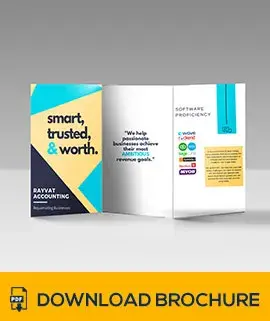The Essential Guide to eCommerce Accounting

A large number of small business organizations prefer operating under the cash basis of accounting since it is easier than the accrual basis. Under a cash basis, revenues and expenditures are recognized when a deal is being transacted, that is, when cash is paid or received. There are no account receivables or account payables recorded as you only record money when you are either receiving it or giving it out.
However, some business owners may ask, you have accounts payable when using the cash method of accounting right? Or can accounts payable only be done with the use of the accrual method of accounting? To review the answer to this standard accounting question, let us consider the following sections.
What Are Accounts Payable?
To find out whether accounts payable is done with cash-based accounting, let us first define what Accounts Payable is.
AP stands for accounts payable and means the outstanding amount that a business organization owes to its suppliers or vendors. Common examples include:
- Inventory purchases
- Supplies
- Equipment
- Rent
- Utilities
- Contract services
Accruing expenses, in this case, appear as short-term liabilities on an accrual-based balance sheet. This indicates the money owed to suppliers for the goods and services that have been bought but payment for which has not been effected through cash. When AP/Assets is high, this can threaten a business if it cannot settle its bills with vendors.
Accounts Payable With Cash Basis Of Accounting
The cash basis of accounting measures cost at the time when the payment has been made and not when goods and/or services were received. This is the main difference from the accruals accounting. Accounts payable has not been against cash which implies that for the accounts payable to be realized, the cash has not changed hands yet.
But literately by the standard rules of cash basis accounting, accounts payable liabilities cannot be recorded in the first place. Despite having to go through the expense, no cash transaction can directly cause it.
Does this mean that a cash-based business has no accounts payable or accounts receivable, money due to the business by the vendors, or money owed to the business by others? Of course not. Fewer transactions occur, but the business still has inventory received, utilities used, and expenses incurred before payment – as in an accrual basis company. The difference is while they are analogous to liabilities that a company has not paid for, they are not reflected on the cash basis balance sheet.
Nonetheless, cash accounting does not mean that a business does not require documentation of its financial commitments and what precise dues to meet. For instance, the electric company presents the customer with a bill on the amount required to be paid for their utilities at a given period, which in this case is monthly. Ignoring bill due dates could lead to penalty tariffs, service interruptions, and credit score deterioration regardless of the method of accounting.
Accounts payable management is crucial in any business organization and different methods can be used to make this process easier, this article discusses how to track accounts payable with cash accounting.
However, even under cash account preparation, unpaid bills do not the balance sheet liability, and hence companies still require accounts payable records in their back office. Here are two approaches:
Open AP Subledger: Often, some cash-based companies also have a detailed sub-ledger to record accounts payable. A third-party external bookkeeper or an internal accountant enters transactions such as invoices and bills in the sub-ledger. This ensures that one is aware of unpaid vendor balances although AP does not appear on the general ledger. Checks are entered into the ledger and when they are paid they are expensed Bills get transferred to the ledger.
Internal AP Records: Instead, small cash-based companies might record AP in some sort of Excel spreadsheet, Google Doc, or accounting software module. It also entails logging the bills received within the organization, such as the vendor, the amount due, and the due date. Accounts get balanced and closed once the bill payment is made in cash. The following is a record of an AP recordkeeping for a lightweight account that is still helpful in cash flow planning.
The use of AP tracking should be coupled with cash flow forecasting.
When using the cash method, unpaid bills are not reflected in the financial statements, and thus, smart business managers also use cash flow forecasting. Regardless of whether you prepare this cash flow forecast on a monthly, bi-monthly, or at least a quarterly basis, you can identify high and low points in cash balances.
For instance, if you are aware that your organization has to meet the tax payment, order inventory, and lease equipment in the same month you can prepare for it. Perhaps some vendor payments may be made in the following month so that cash requirements can be managed effectively. if you cannot look forward and see the cash payments that will be forthcoming, you may be in for a shock of your life where you realize you have got some large bills that are going to generate negative cash.
Accounts Payable stands out more with Cash Accounting
Whereas in the accrual basis of accounting, accounts payable is a significant aspect of the company, its management becomes more important under the cash basis of accounting. Why? This is because cash operating expenses and revenues can only be monitored when the money is exchanged.
Option C is accurate because there is no accrued liabilities safety net on the balance sheet like with the accrual accounting. Accounts currently owed to vendors do not appear under “owed”. So if you no longer know how many accounts payable are unpaid, or you forget to pay your bills on time, then you have problems on your hands very soon!
That risk will not show up in the cash ledger balances until costs are actually incurred – and that frequently is at the very time when cash is least available. It’s the bank account that suffers the first loss well before the financials give a hint of the problem.
High Account Payable as a Working Capital Management Problem: the Dynamics of Cash Flows
Every business entity feels the desire to delay the payment of accounts payable to the greatest extent possible, thus optimizing working capital and liquid assets. However, AP levels spike too high relative to cash balances and incoming cash, businesses run into trouble:
- Past due charges or interest levied on the vendors
- Such events as supply or inventory disruption
- Essentials such as electricity, water, or even internet connections are often terminated or canceled.
- Legal proceedings by the creditor, or threats to the debtor by the creditor
- Probability of not being able to obtain better payment terms in the future
- Credit score deterioration among business people
- Loan provided by the bank & its default (if any)
- Therefore, in its totality, the analysis exhibits that the company experiences many issues regarding cash flow.
As cash basis accounting does not “look” high AP amounts, poor Vendor bill tracking puts Companies at high risk.
Conclusion: Tracking AP Still Matters with Cash Basis
In sum, although accounts payable do not appear as current liabilities in the balance sheet under the cash basis of accounting it is crucial to track them as they are important for the success of the small business. It helps for managing the cash and planning the payment which is due soon, and not forgetting the importance of having a good rapport with the vendors. And while accounts payable of a technical kind do not show up on a cash basis balance sheet, bills do build up and contracts still have to be fulfilled.
Contact us here for an accounts payable solution.

